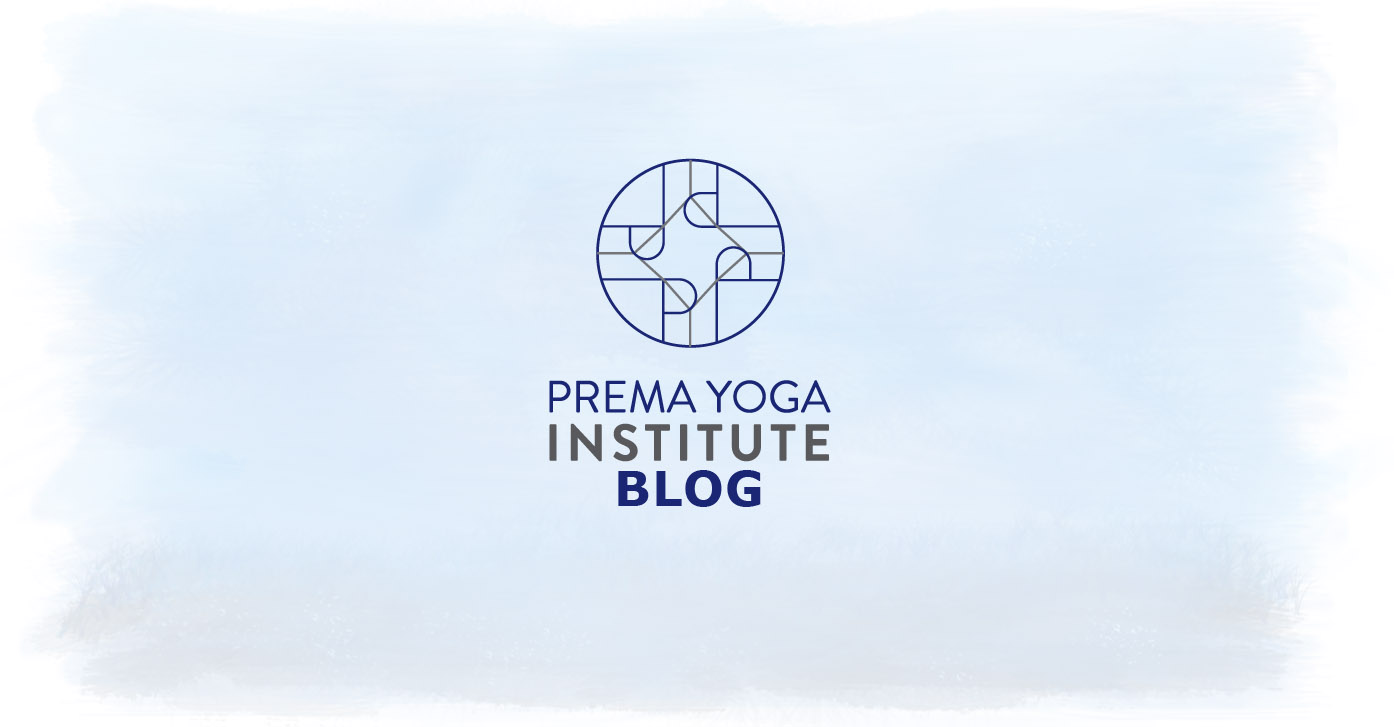
Benefits of Yoga for Pain Management
Benefits of Yoga for Pain Management
By integrating a yoga practice into your healthcare and wellness routine, your body and mind work towards a peaceful and comfortable balance. Discomfort and pain in our bodies may be transitory or permanent, and yoga mayhelp alleviate suffering.
Yoga for Pain Management - Types of pain and your nervous system
Acute pain is sudden pain, sometimes associated with a fresh injury. Acute pain subsides as the cause of the pain is healed.
Chronic pain is sustained and continues after all possible causes are treated. Sometimes, chronic pain begins without an imbalance or injury, and no reason can be discerned.
Our bodies perceive pain via our nervous system. One branch of the nervous system, the sympathetic nervous system, prepares the body to fight or flee. There's a quick response as the heart rate quickens and muscles prepare to respond to a threat. When the sympathetic nervous system is alerted, stress levels go up!
Another branch, the parasympathetic nervous system, supports the body in balance, creating the foundation for rest, healing, and digestion. The physical manifestations are the opposite of the body in a fight or flight situation - the heart rate slows, muscles relax, and there is a slower response time of your nerves.
When we experience pain, we shift into fight or flight mode. We become physically and mentally stressed, increasing our vital signs with heightened tightness and increased stress hormones.
Using yoga for pain management helps to stimulate the parasympathetic nervous system, bringing relaxation to the body to tone down the strains of the intensified sympathetic nervous system. Asana addresses movement and pranayama addresses internal peace and breath. Together, these aspects of yoga for pain management work towards restoring balance in the body and making pain more manageable.
The benefits of yoga for pain management
Mobility is the cornerstone of a healthy physical body and combines flexibility and strength. With healthy mobility, the physical structures of the body have a proper framework in which to heal. Posture is improved, joints are lubricated, and stability increases which may help prevent further injuries.
The physical aspect of yoga for pain management also increases energy levels and improves our mood. It's possible to boost confidence we struggle less with daily activities thanks to gentle yogic movement.
There is also mounting scientific research that supports using yoga for pain management. Wrist pain may be reduced as grip strength increases with yoga. It's also been shown that Iyengar yoga helps with reducing low back pain while boosting mood. Even “pain associated with cancer and chronic pain conditions has been shown to improve with yoga” according to a study from the National Center for Biotechnology Information.
How pranayama helps alleviate and soothe pain
Pranayama (or prāṇāyāma) can work directly to stimulate the parasympathetic nervous system. Mindful breathing techniques bring a chronic pain sufferer into the present moment, taking the focus away from pain and directing the body out of panic mode. Using pranayama to boost relaxation also takes the body away from the constant physical stress of being in pain.
There is also research that shows pranayama influences pain levels. One study indicates that deep and slow breathing does influence a decrease in the sympathetic nervous system and decreased pain perception. (2) Other studies have shown that breathing techniques help the laboring mother and chronic pain patients.
Considerations for managing pain with yoga
Approach your health holistically! There is more than one road to wellness; yoga is just one part of the journey.
Work with a team of specialists. Yoga teachers and particularly yoga therapists with advanced certifications and extensive educations have the knowledge and skills needed to coordinate a wellness plan with your doctor.
Enjoy the process and take the tools home with you. Yoga is not a prescription or a quick fix. It's a lifestyle that allows you to connect with movement and breath as needed. There's no schedule to follow - yoga is always there.
For Advanced Yoga Teachers and studying Yoga Therapists – consider enrolling in Advanced Yoga Teacher Training at Prema Yoga Institute to better serve your students.
Learning how to better serve your clients with yoga for pain management can be rewarding and open up freedoms for your students in their daily life. Enroll in advanced yoga teacher training at Prema Yoga Institute to study advanced techniques in using yoga for your clients health. Your skills will grow, and you will be better able to serve diverse bodies and ages in your community.
If you have any further questions about this topic, contact us at Prema Yoga Institute.
Prema Yoga Institute is no longer limited to locals of New York City and is now available online with interactive trainings through 2022. PYI is an accredited program based in New York city, teaching students around the globe through online classes. Contact us today to learn more about how we can help you advance your yoga practice and teaching!
If you found this information useful, visit our Blog often or subscribe to our Mailing List for similar content.
When Doctors Suggest Yoga Therapy
When Doctors Suggest Yoga Therapy
Many a yoga teacher has quoted Sri K. Pattabhi Jois saying, "do your practice, and all is coming." The practice of yoga itself is transformative, often shaping our relationship to the body, the mind, and how we relate to the present moment. Yoga is unlike a pill or a surgical intervention; it is the slow and methodical growth and change of the student within their journey.
So, what happens when traditional Western medicine doctors suggest yoga therapy for their patients? Are these distinct methods of care and self-care parallel to each other, or do they blend seamlessly?
The place for yoga therapy as part of a holistic life choice
When it comes to yoga therapy, choosing a yogic lifestyle can integrate well with Western medical care. Through scientifically relevant and peer-reviewed data, modern medicine now sees that yoga therapy may benefit patients with various health challenges. Science tells us that yoga and mindfulness may positively affect our brains, change the levels of stress hormones in our bodies, and enhance general health by perhaps helping with pain management, insomnia, depression, and more.
Incorporating yoga therapy into a health care regime is tailored to the individual. Yoga as a therapeutic element of healing is also a whole-body approach. No stone is left unturned, and no aspect of the human form and spirit is ignored.
Movement and āsana address the body, or Annamaya Kosha. Prānāyāma encourages stress reduction and mindfulness. Meditation, sound immersion, and guided imagery also support this holistic life choice. These supportive tools allow the body and mind to relax, which supports a client’s physical healing.
The most significant benefit of yoga therapy could be that of balance and peace. While we usually think of peace as an ethereal existence, it's closely linked to the physical processes in the body. Yoga therapy stimulates the parasympathetic nervous system, which is responsible for relaxation, stress reduction, and digestion.
In addition to a doctor-suggested yoga therapy program's physical and mental benefits, one can continue their practice as needed at home.
Where to find yoga therapy programs that partner with physicians and health care professionals
More physicians and health care workers understand yoga therapy as a holistic treatment that complements traditional western medicine. Cancer centers often have yoga therapy programs to support the physical and mental challenges of chemotherapy and other cancer treatments, and concierge services and medical groups often in include yoga therapy in their services.
Yoga teachers with advanced training and certifications by the International Association of Yoga Therapists (IAYT) partner with chiropractors, acupuncturists, physical therapists, and physicians to address an individual's specific needs. Integrative medicine centers and even private practices offer yoga alongside traditional Western treatments.
You may find that your doctor does not have a direct referral to a yoga therapy program. In that case, do a little bit of research into the yoga therapy programs in your area and uncover options. It's wise to have your physician consult with a yoga therapy provider before beginning. Healing is a team effort, and you want all your team members on the same page!
Becoming a yoga therapist
If you are a yoga teacher that enjoys the idea of using yoga to serve your student’s health challenges, consider seeking advanced yoga teacher training, specifically as a yoga therapist.
There are many advanced YTT courses available, and many you can even do online. For example, Prema Yoga Institute’s “Therapeutic Yoga Essentials” is available as an online course and addresses how to make yoga accessible for different populations, such as beginners and older populations.
Learn more about this topic by reading “Becoming a Yoga Therapist” from a previous blog.
Yoga therapy as a part of the wellness process blends seamlessly with health treatments
Whether your doctor has suggested yoga therapy or you are a yoga teacher exploring yoga therapy – we recommend doing your own research about the many possible benefits of yoga therapy.
If you have any questions about this topic, contact us at Prema Yoga Institute. Prema Yoga Institute is no longer limited to locals of New York City and is now available online with interactive trainings through 2022. PYI is an accredited program based in New York city, teaching students around the globe through online classes. Contact us today to learn more about how we can help you advance your yoga practice and teaching!
If you found this information useful, visit our Blog often or subscribe to our Mailing List for similar content.
Becoming a Yoga Therapist
Becoming a Yoga Therapist
There's a fine difference between a Yoga Teacher and a Yoga Therapist. Yoga Teachers focus on the principles; Yoga Therapists focus on the individual.
Modern Yoga vs. Yoga Therapy
Mainstream yoga classes typically offer group classes, with asana as the primary focus. Students learn alignment, flowing, and build strength as they navigate through a class. Yoga is widely seen as another form of exercise, with some teachers including meditation, chanting, or mindfulness practices.
Pranayama and meditation are rarely the sole foci in a yoga class. While a group yoga class can be beneficial and does open the door for more spiritual or mental yoga practice, they may not serve those wanting to incorporate mindfulness to a greater degree. The sheer physical nature of these classes overlooks the individual, especially students with special needs, injuries, or diseases.
Modern Yoga classes tend to be one-way; students are guided as a group, with minimal adjustments to accommodate the individual. Yoga Therapy is a partnership with open, two-way communication between Yoga Therapist and the student.
Yoga Therapy is a way to use all aspects of Yoga to support general health and provide therapeutic benefits for specific challenges in the body and mind. Yoga Therapists formally collect information about a client's health to create assessments and then a support plan. Holistic life choices become the focus instead of exercise and movement.
A Yoga Therapy Session
Any Yoga Therapy session begins with open communications and information gathering. From there, the Yoga Therapist can help a client develop goals and provide techniques for managing their wellness.
With many diseases and conditions, comfortable daily functioning is a challenge. Mental health conditions and physical conditions can be addressed when a health care professional has suggested yoga. Yoga therapists work with their clients to support balance, improve general health, and perhaps improve the quality of life.
Yoga therapy is more than simply pairing asana with evidence-based yoga for ailments (in fact this can be reductionist). It's appropriate for sessions to include dialog, assists when requested, guided meditations, and even homework.
It's not unusual for a therapeutic session to include multiple aspects of Yoga. Targeted asana allows movement to support certain health conditions, both physical and mental. Pranayama helps to focus the mind, while meditation creates relaxation and peace. Sounds, Ayurvedic scents, guided meditations, and yoga nidra may also complete a session.
With a plan targeted to a client's needs and situation, the client can use the therapeutic techniques away from a session. These techniques not only help provide holistic wellbeing, but they also serve to empower and uplift the client. As progress continues, the student gains confidence, and independence returns.
A Yoga Therapist often partners with other healing professionals. It's not unusual to pair Yoga Therapy with western medicine, Reiki therapy, massage therapy, acupuncture, and other health care disciplines. Health care providers who have recommended yoga may provide guidance or information for the client to share with the yoga therapist.
Becoming a Yoga Therapist
The journey of any Yoga guide begins with becoming a Yoga Teacher. A commitment of 200 hours of study into the basics of Yoga is required to earn registration with Yoga Alliance, earning the designation of Registered Yoga Teacher (RYT-200).
It's possible to continue your yoga education with advanced yoga teacher training courses. For example, Therapeutic Yoga Essentials addresses how to make yoga accessible for different populations, such as beginners and older populations. The use of props is studied to allow asana for all bodies. Another advanced yoga teacher training course is the Principles of Ayurveda, the sister science of Yoga, which teaches how Ayurveda opens the door to a better understanding of a person's state, and how seasonal changes interact with the those doshas.
The path to becoming a certified Yoga Therapist is a comprehensive, 800-hour program and culminates with testing, typically with the International Association of Yoga Therapists (IAYT). Their system of IAYT-accredited schools guarantees that your studies will prepare you for certification and a successful career serving others.
Check out Prema Yoga Institute for Online Advanced Yoga Teacher Trainings
While you’re here, we’d love to invite you to check out Prema Yoga Institute, which is longer limited to New York City and is now available online with interactive trainings through 2022. PYI is an accredited program based in New York city, teaching students around the globe through online classes. Contact us today to learn more about how we can help you advance your yoga practice and teaching!
If you found this information useful, visit our Blog often or subscribe to our Mailing List for similar content.





